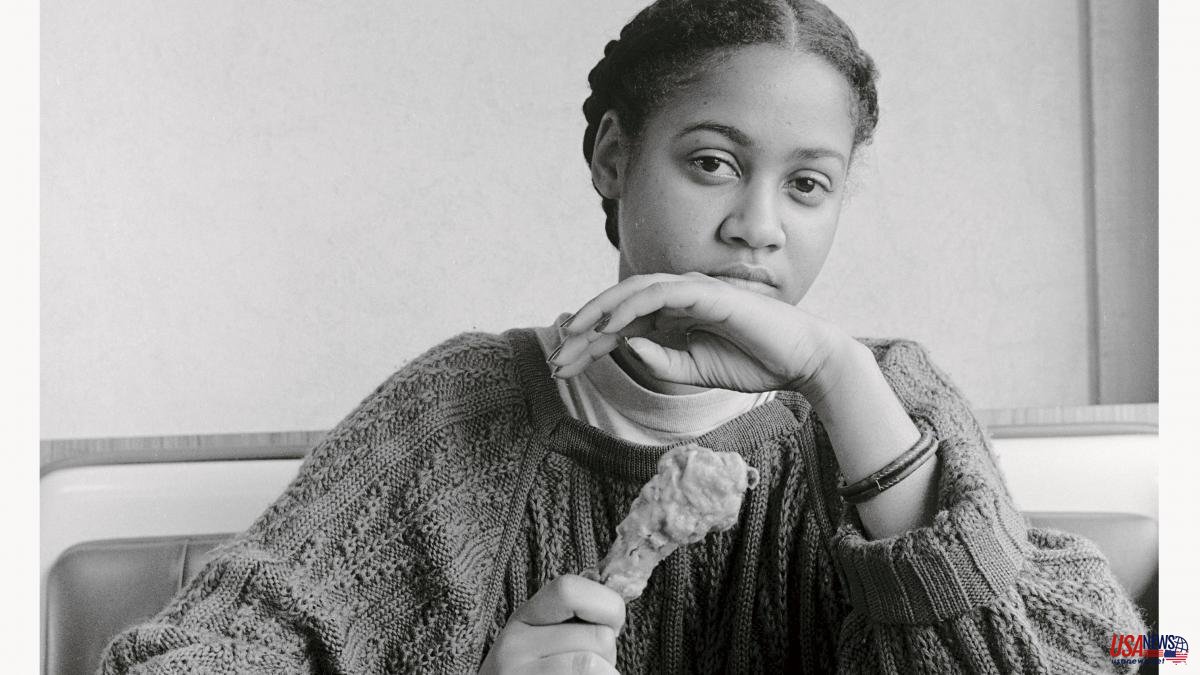Long before the explosion of the Black Live Matters movement, there were creators who focused their work on vindicating the role of the African-American community and denouncing the ostracism to which it has traditionally been subjected. This is the case of the multidisciplinary photographer and artist Carrie Mae Weems, who was four decades ahead of this cause and soaked a large part of her creations with it. Now, Fundación MAPFRE's KBr cultural center is dedicating an extensive retrospective to him, which has become one of the highlights of Barcelona's cultural agenda for the coming cold months.
Christened as 'Carrie Mae Weems. A great turn of the possible ’and curated by Elvira Dyangani Ose, is presented as one of the most complete exhibitions on the author that has been made to date in our country and covers her career following a chronological order. Organized by the Foundation in collaboration with Foto Colectania and Württembergischer Kunstverein, it can be seen until January 15 and, in addition to the KBr, which covers the bulk of the works on display, it is also extended to the Fundació Foto Colectania and the Capella del MACBA.
In line with one of the great objectives with which the KBr was born two years ago, the exhibition becomes a unique opportunity for the public to discover this North American who, despite being considered one of the living artists most important in her country, she is still relatively unknown here. Among others, she has exhibited at the MET, the Tate Modern in London or the Guggenheim in New York; in the latter, she was the first African-American woman to be the subject of a retrospective. Her eclectic work includes photography, audiovisuals, performance, installations and video.
Born in 1953 in Portland, Weems began her career in 1974 studying photography and design at the City College of San Francisco, having become a mother at the young age of 16. After spending a few years in Europe, she returned to her country and began working as an assistant in the studio of Anthony Barboza and, at the same time, doing extensive research on the work of black artists. After studying folklore at UC Berkeley, she moved to Paris in 1993, where she received her first major commission from Weston Naef and the Getty Museum.
It was the beginning of a successful career throughout which the artist interrogates history and questions the visibility or invisibility of those who have contributed to its construction, trying to subvert the dominant discourse and always denouncing the racial prejudices so deeply rooted in the character. and the sociopolitical imaginary of the United States. Since her first series, Family Pictures
Carrie, a true master of storytelling, chooses on many occasions to narrate stories through her alter ego, a woman with her back to us whose face we never see. She is about the artist herself turned into the muse through a performative attitude that has accompanied her throughout her career, since she studied dance at the beginning of her career. The muse challenges history and the settings in which it takes place, while she embraces the future and its possibilities and encourages the viewer to reimagine a shared future.
Sometimes, as in the Cuba series, this alter ego wears white, transmitting optimism; in others, such as Museums, he appears completely in black, which gives him a spectral and accusing appearance: turning his back to the camera in front of the British Museum or the Louvre, he symbolizes the exclusion to which these institutions have subjected Afro-American groups and women.
He does the same in series such as En Framed By Modernism, made in collaboration with the painter Robert Colescott, in which he enters the work of art to denounce the fact that the black woman's body has never been the one chosen by art history as model, in front of the white body. Also in Not Manet's Type, where he invites the viewer to peek into her bedroom and gaze voyeuristically at her body through a dressing table mirror: here, again, it is the canon of art history. what is under scrutiny.
The series exhibited at the KBr tell the story of a long genealogy of violence and oppression: from the slave trade across the Atlantic to 20th-century African-American political activism, stories that Weems strives to reverse with a humorous but also compassionate gaze. Thus, in Ain't Jokin' he uses derogatory jokes to which people of color are usually subjected, while in American Icons he chooses objects such as salt shakers or ice buckets in the shape of people of color, which are highly successful in the United States, to Talk about prejudice.
One of her most emblematic, Colored People, is made up of photographs of African-American youth and children that the artist has tinted with yellows, blues and magenta that allude to theories according to which a person of color was "better" according to the clarity of their skin. In Constructing History: A Requiem to Mark the Moment, she made with her students from the Savannah College of Art and Design, she recreates the assassinations of politicians like John F. Kennedy or Malcolm X; while in Land of Broken Dreams: A Case Study, she reviews systemic and structural violence against black Americans.
Especially critical of racism is the From Here I Saw What Happened And I Cried series, which is made up of thirty-three images drawn primarily from an 1850s daguerreotype archive of African slaves in South Carolina, commissioned by a Harvard scientist for test his theory that blacks were an inferior race. Weeds dyes the images red and blue and adds descriptive phrases such as “Black Guy,” in what is both an indictment of photography as an ally of slavery and a tribute to the wronged. The university, which threatened to sue her for using the material, ended up buying part of the work from her.
The KBr exhibition is complemented by the one that can be seen at the Fundació Foto Colectania, in which the Kitchen Table series stands out, in which Weems uses the domestic space to invite reflection on topics such as tradition, family or monogamy. For its part, the MACBA Capella hosts the video installation Lincoln, Lonnie and Me – A story in 5 parts, in which the artist uses phantasmagorical figures on a human scale to analyse, through President Abraham Lincoln and the activist Lonnie Graham, how the historical narratives.













